The content of the article
Violet tricolor very pretty. She is dressed in a festive multi-colored dress, therefore, she stands out among other, not so bright colors. It belongs to the annual herbaceous plants, belongs to a large family of violets. It grows more often with weed in vegetable gardens and on steam fields. You can find a plant on the forest edges lit by the sun, and flood meadows, near numerous shrubs.
These different violets ...
Sometimes there is confusion with different types of violets. And their differences are as follows:
- Violet tricolor has a tricolor beater. It grows up to 45 cm. The flowers are large, usually with a deep blue tint or dark purple. The beginning of flowering falls on April, ends - in September.
- Field violet is endowed with a halo of two flowers, with white and yellow. The height is from 15 to 30 cm, the flowers reach a size of up to 1.5 cm. It contains more violin alkaloid (it causes a gag reflex), but saponins are much smaller. It blooms from mid-May to September. For sale in the pharmacy network during packaging, both types are used.
- Violet dubious. It is also called changeable. It is cultivated thanks to fragrant purple flowers. It is considered poisonous, although in folk medicine it is widely used not only as a decoction, but also externally when wounds, swelling and inflammation of the skin are treated.
There are violet tricolor own fruits. They are a single-nest box of green color, in which small seeds of brown shade are hidden. Maturation begins in June.
Preparation during flowering
Violet tricolor helps to cure many diseases, because it is harvested every year. Use mainly herbal part, at least - the root. The best time to collect is the flowering period.
The above-ground part should be cut so that the root remains in the ground.The grass must be dried and laid out under a canopy, occasionally turning over. The place should not be very sunny, but with a constant influx of fresh air. The procedure is considered complete when the stem becomes brittle, and does not bend when pressed. If an oven is used during drying, its temperature should not exceed 40 degrees. The smell of the tricolor violets after drying remains weak, and the taste is sweetish, with a sensation of mucus.
It is best kept raw materials in glass jars, tightly closed. Violet does not lose its valuable qualities for 1.5 - 2 years.
What is the composition contained in the violet
The plant has healing power due to its rich composition. Here is:
- Saponins. They have antimicrobial and anti-inflammatory properties.
- Flavonoids. They have a very huge spectrum of activity, above all, anti-cancer. In the tricolor violet, these substances are a plant antibiotic that can excrete heavy metal salts. Effective as a prophylactic agent of cardiovascular diseases.
- Glycosides. Play a large role in the respiratory process,possess cardiotonic activity.
- Salicylates Contribute to fever, relieve inflammation and fight pathogenic microflora.
- Essential oil Violets have a calming effect on the nervous system, as well as such actions as antiseptic, expectorant, antiseptic.
- Carotenoids. Possess antioxidant capabilities, support the immune system, help fight inflammatory processes.
- Vitamins C, E, R. These vitamins help a person stay healthy. Vitamin E has a protective function, fighting free radicals, preserving fatty acids. For example, the appearance of age spots in older people is an accumulation of fat-like substances that have been oxidized by free radicals. If the body does not have enough vitamin E, they will not be able to appear. Vitamin C is also a strong antioxidant that strengthens the immune system. Helps the adrenal glands and restores tissue, is needed for the production of collagen, accelerating the process of wound healing. Vitamin P improves capillary walls, supports the ability of the heart to use oxygen.
- Mucus They have enveloping properties and high expectorant effect.
People have been using all the beneficial substances of the tricolor violet for a long time, because the plant has the following properties:
- antiseptic;
- soothing;
- expectorant;
- anti-inflammatory;
- emollient;
- pathogenic;
- blood purifying;
- antirheumatic;
- diuretic;
- disinfectant;
- tonic
Tricolor violet is used when it is necessary to normalize the metabolism, for those suffering from bronchitis, whooping cough, respiratory tract catarrh, polyarthritis, gout, and also for diseases of the gastrointestinal tract and urinary system. Women after childbirth violet will help reduce the uterus, and children - to get rid of rickets or diathesis. With eczema and scrofula, you can bathe children in broth.
Many skin diseases stop compresses, decoctions, infusions of tricolor violets. As a rule, it is dermatitis, psoriasis, acne, boils and trophic ulcers, long non-healing wounds. Juice herbs rub problem areas if pathologies such as aphthous ulcers, herpes, impetigo appear. Lishai are removed using ground grass.The composition of many diuretic and expectorant drugs included this plant.
In folk medicine, the beneficial properties of the violet tricolor are used against diseases such as tuberculosis of the lymph nodes or lungs, cystitis, atherosclerosis, cystitis, kidney stones, palpitations, increased sexual excitability, painful erection (especially with hops, bleeding, skin lesions).
Healing recipes
Diuretic infusion can be done at home. There are several ways to cook it:
- 60 gr. herbs insist in 600 ml of water;
- 20 gr. root pour 600 ml of water, put on low heat. Broth should be boiled down on the third part.
You need to take no more than 5 times a day. Single dose - 15 gr. If you want to use as a laxative, increase the dose to 45 grams. And as an emetic, you can increase to 50 - 60 grams.
Most often, violet as a medicine is used with other herbs:
- from cystitis, pyelonephritis and kidney disease take additionally hop cones and lingonberry leaves;
- from dermatitis, psoriasis - centaury, wild rosemary, hoofed animal;
- from the diathesis collect sequence and nightshade sweet-bitter.
Who often suffers from furunculosis, you need to try this tool. Would need:
- herbs violets - 4 parts;
- marigold flowers - 2 parts;
- burdock root - 2 parts.
All components are crushed. On a tablespoon pour 300 ml of cold water, let it brew for 5 hours. After setting to boil, the drug boils for 60 seconds. Drink 150 gr. 1 - 2 times a day.
If cystitis worries, there is a way to get rid of it. To do this, you need to take a bath with a decoction of medicinal plants. It is necessary to cook:
- Violet flowers and oregano herb - 4 parts;
- Birch leaves currant, better than black - 6 parts;
- thyme - 3 parts;
- Eucalyptus leaves - 1 part.
Three spoons of the mixture will require a liter of water. After bringing to a boil, it is necessary to insist. Water during the procedure should be warm.
Cystitis, as well as other inflammations associated with the urinary system, are also treated with the following recipe:
- grass violets and hop cones of ordinary - 1 part;
- cowberry leaves - 3 parts.
On a tablespoon of the collection will need 400 grams. boiling water. Infuse medication should 3 hours. Then you need to strain. Drink 150 gr. twice a day. As a rule, therapy takes a month. If required, the course is repeated after 14 days.
Popular "Averin tea", which is prepared from allergies, diathesis and scrofula, is done like this:
- grass tricolor violets, a series - 5 parts;
- Nightshade bitter, grassy part with leaves - 1 part.
- You can give to children under Art. spoon 4 times a day.
After measuring a tablespoon of mixed plants, pour it with a glass of boiling water. Insist until the medicine has cooled. Give as children 1 tbsp. spoon 4 times a day as a remedy for diathesis and scrofula.
Application Restrictions
The tricolor violet is contraindicated for hepatitis and glomerulonephritis. It can not be used during childbirth, as the plant tones the uterus.
Remember that a dose violation may cause nausea, vomiting or diarrhea.
Video: useful properties and application of the forest violet

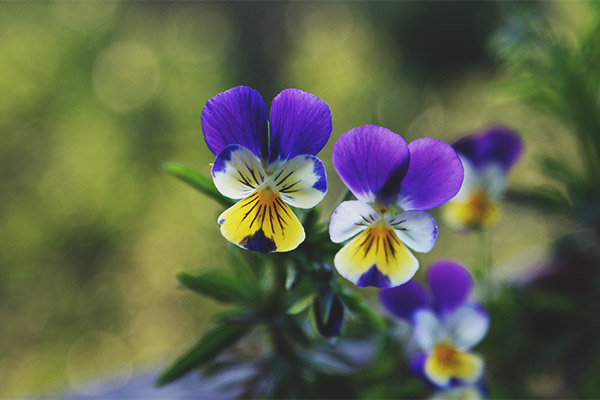
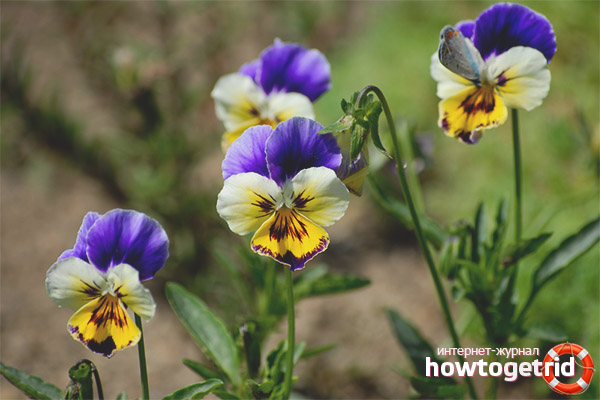


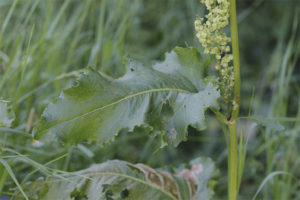
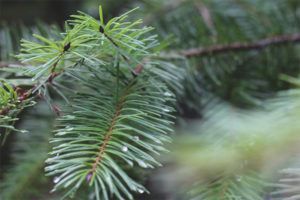
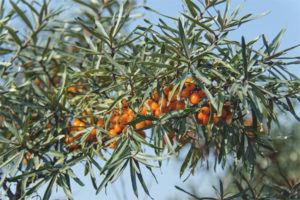

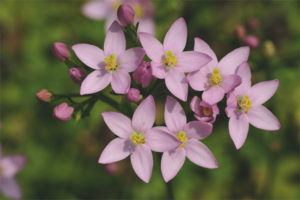
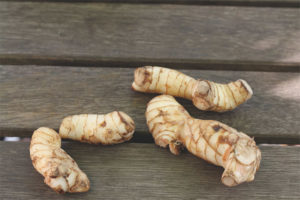
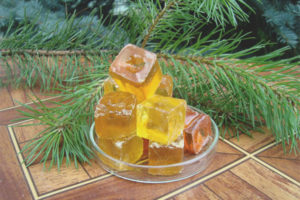
To send